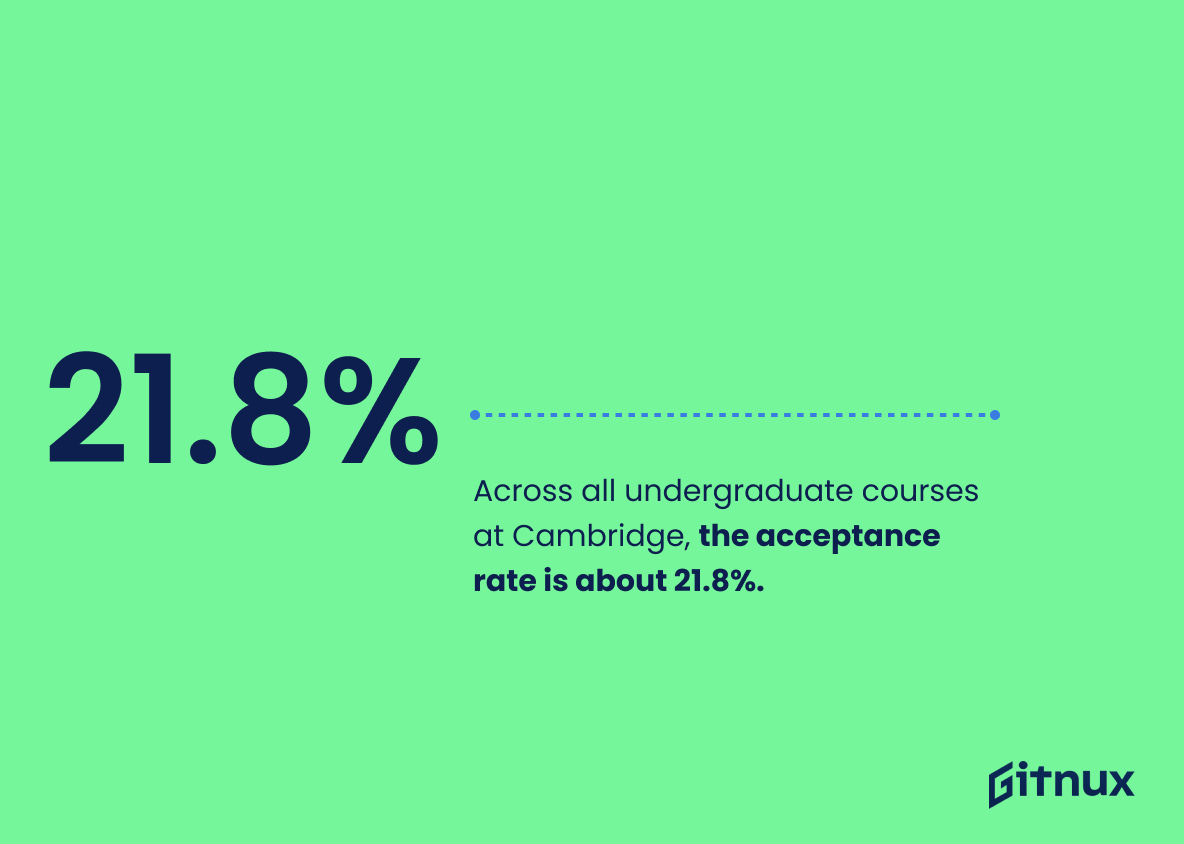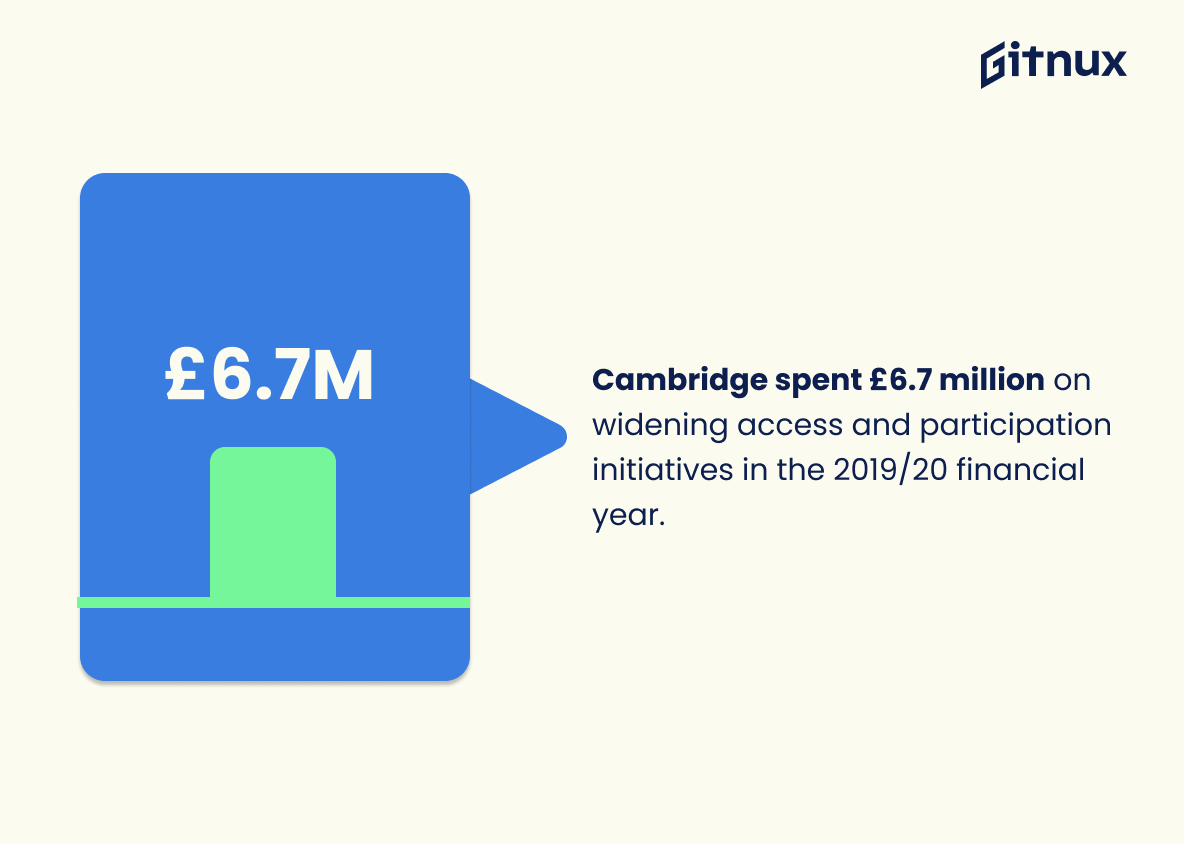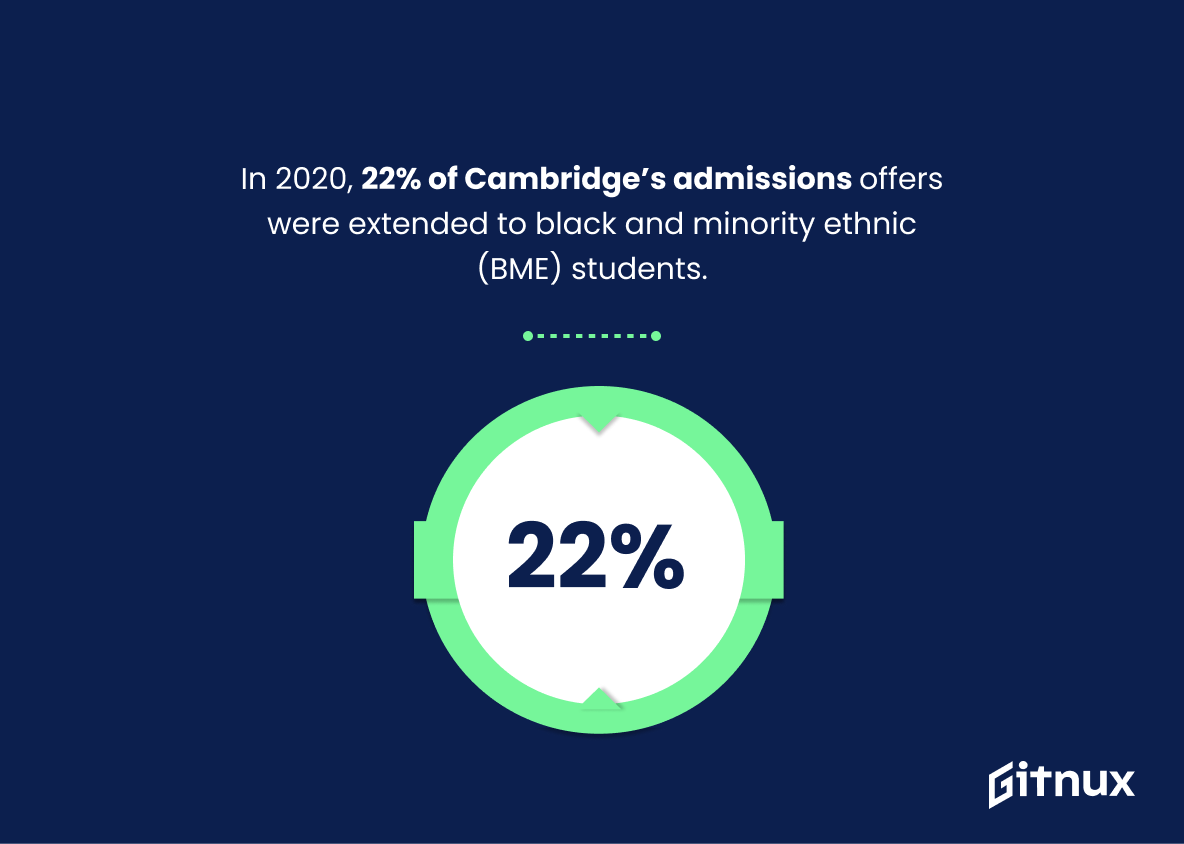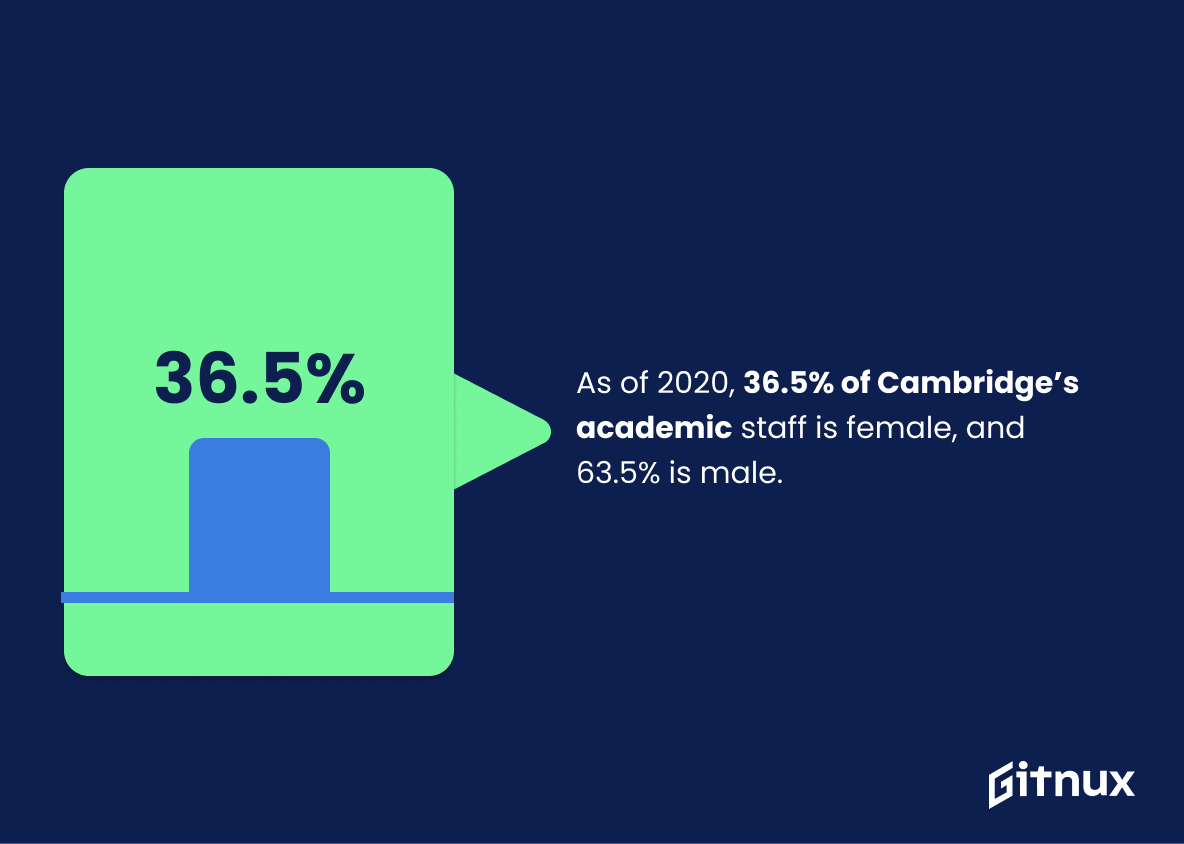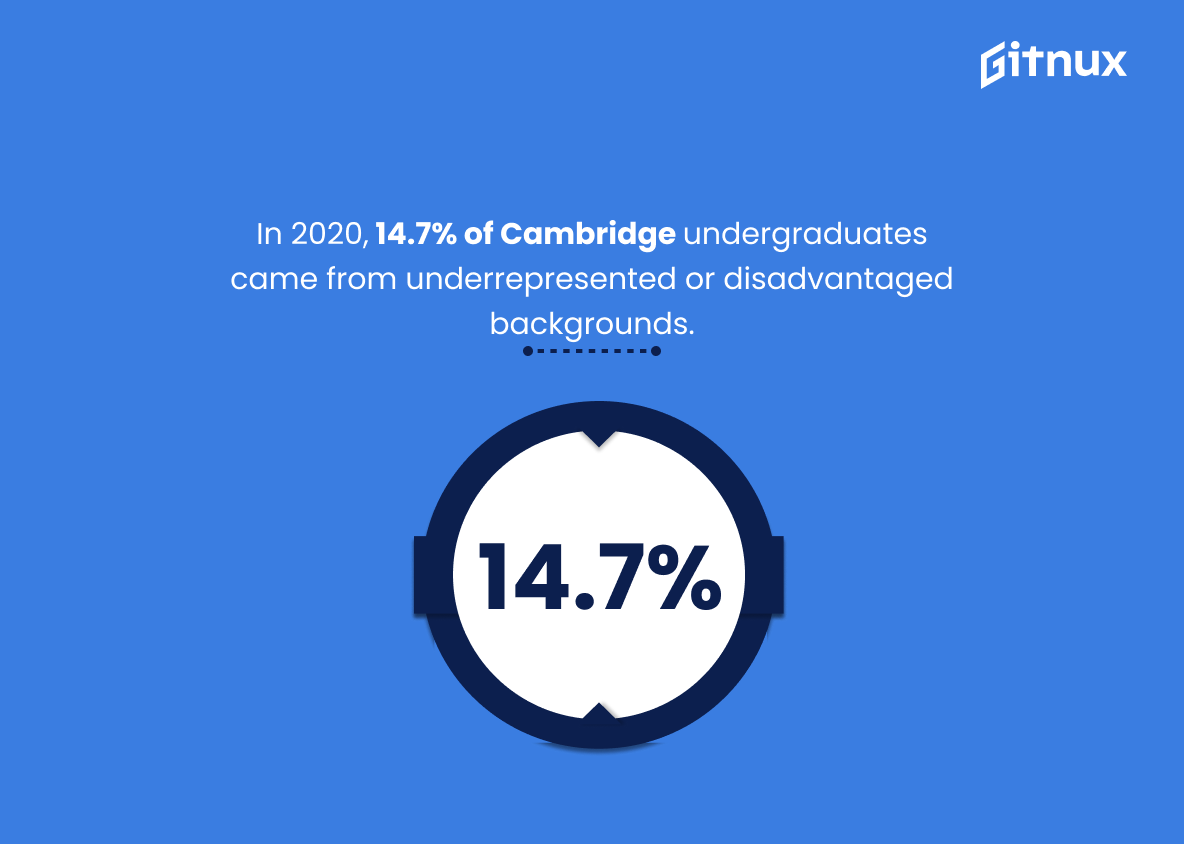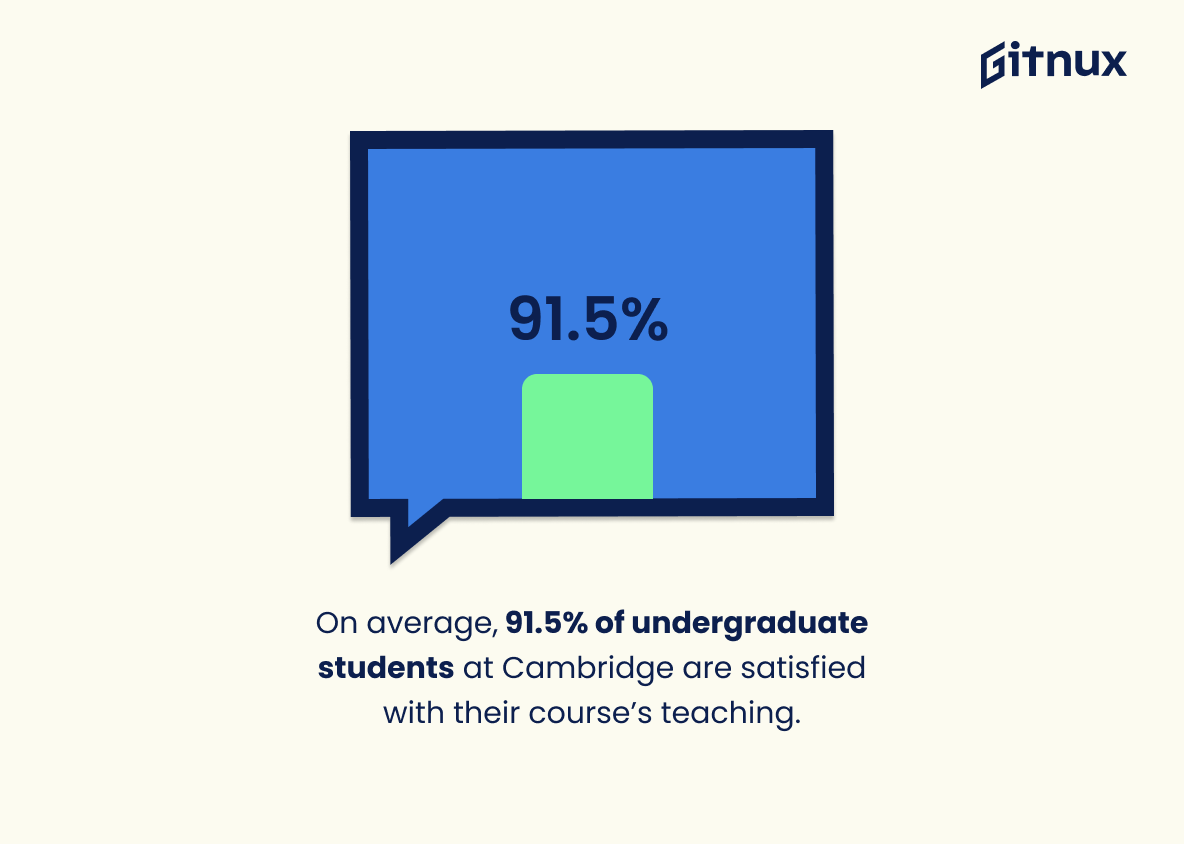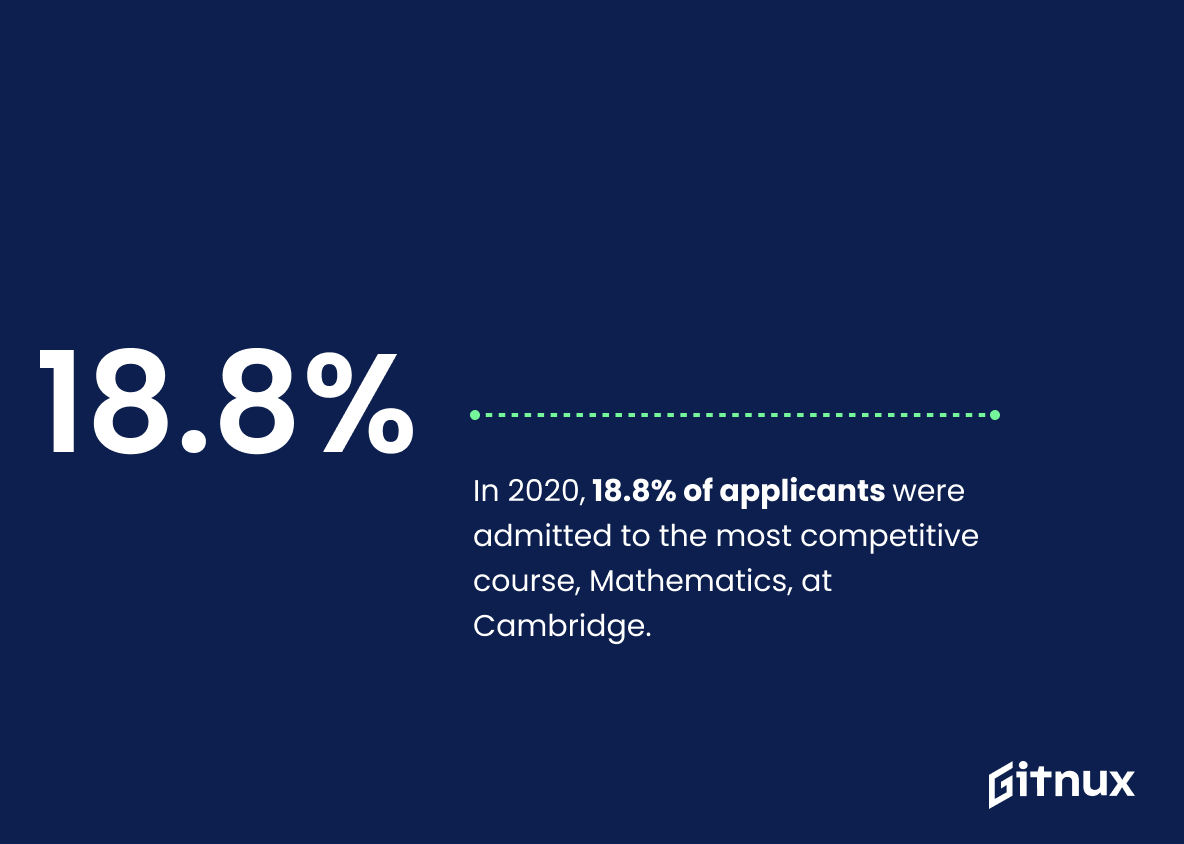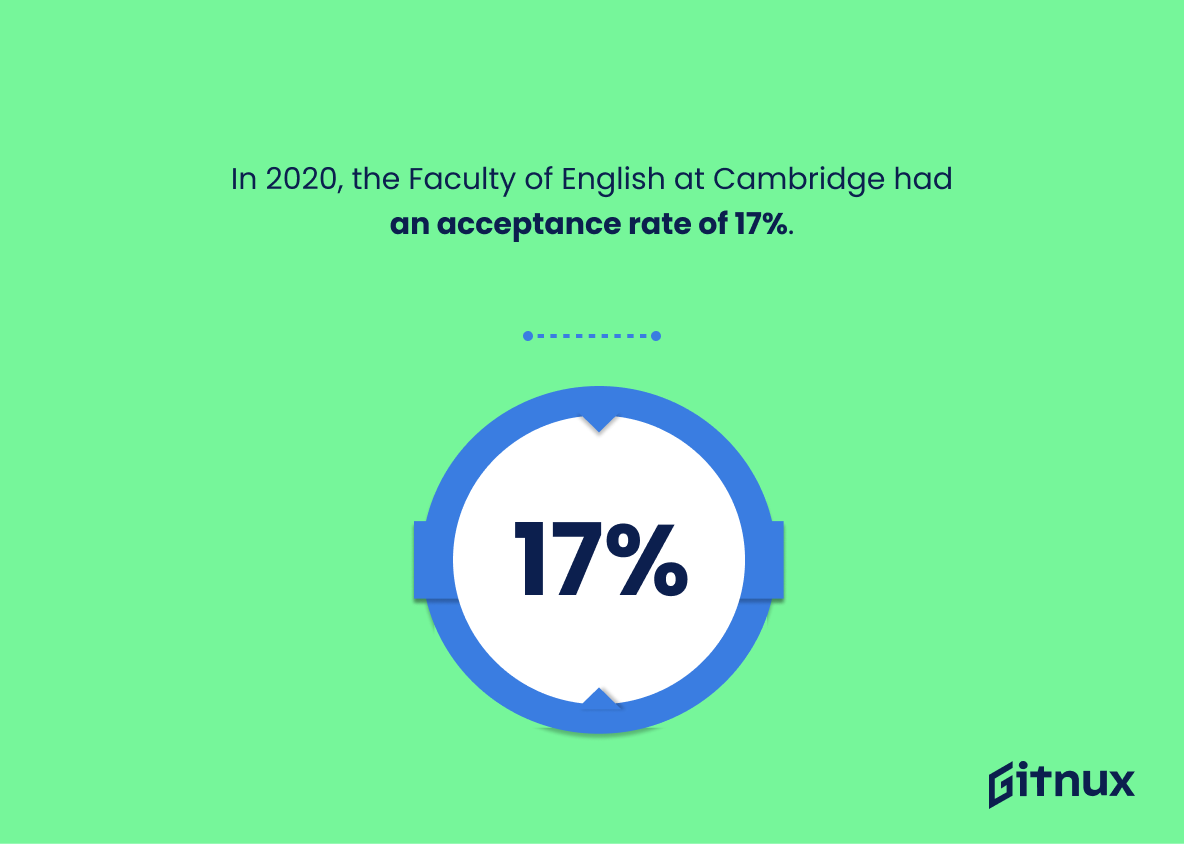The University of Cambridge is one of the most prestigious universities in the world, and its admissions process can be highly competitive. In this blog post, we will explore some interesting statistics about Cambridge’s undergraduate applications for entry in 2020/2021 academic year as well as other related data points such as acceptance rates, student demographics, course-specific admission numbers and financial aid opportunities. We hope that these facts provide a better understanding of what it takes to get into this esteemed institution.
This statistic is a testament to the immense popularity of the University of Cambridge, with over 23,000 students vying for a place in the 2020/2021 academic year. It speaks to the university’s reputation as a world-class institution, and the high demand for its educational opportunities. This is a clear indication that Cambridge remains a highly sought-after destination for aspiring students.
Cambridge offers admission to 33.9% of its applicants in 2020/2021.
The fact that Cambridge offers admission to 33.9% of its applicants in 2020/2021 is a testament to the university’s commitment to providing access to a world-class education. This statistic highlights the university’s dedication to providing opportunities to a diverse range of students, regardless of their background or academic achievements. It also serves as a reminder that Cambridge is a highly competitive institution, and that students must work hard to gain admission.
Cambridge Admissions Statistics Overview
In 2020, 70% of Cambridge’s UK undergraduate intake came from state schools.
This statistic is a testament to Cambridge’s commitment to providing equal access to higher education, regardless of background. It highlights the university’s dedication to ensuring that students from all walks of life have the opportunity to pursue their academic dreams. This is especially important in a world where educational inequality is still a major issue, and it is encouraging to see that Cambridge is taking steps to address this.
According to 2019 data, 30.2% of the University’s students come from outside the UK.
This statistic is indicative of the University’s commitment to internationalism and diversity. It shows that Cambridge is a place where students from all over the world can come together to learn and grow. This is an important factor for prospective students to consider when deciding which university to attend, as it demonstrates that Cambridge is a welcoming and inclusive environment.
Across all undergraduate courses at Cambridge, the acceptance rate is about 21.8%.
This statistic is a crucial indicator of the competitiveness of Cambridge’s undergraduate admissions process. It reveals that, despite the university’s reputation for excellence, only a small fraction of applicants are successful in gaining entry. This highlights the importance of putting in the necessary effort to make a successful application, as well as the need for prospective students to be realistic about their chances of success.
Cambridge spent £6.7 million on widening access and participation initiatives in the 2019/20 financial year.
This statistic is significant in the context of Cambridge Admissions Statistics as it highlights the university’s commitment to providing equal opportunities for all students. The £6.7 million spent on widening access and participation initiatives demonstrates Cambridge’s dedication to ensuring that students from all backgrounds have the chance to apply and be accepted into the university. This is an important step in creating a more diverse and inclusive student body.
In 2020, 22% of Cambridge’s admissions offers were extended to black and minority ethnic (BME) students.
This statistic is a powerful indicator of Cambridge’s commitment to diversity and inclusion. It shows that the university is taking steps to ensure that BME students are given the same opportunities as their peers, and that they are being welcomed into the Cambridge community. This is an important step in creating a more equitable and inclusive environment for all students.
In 2020, 13.2% of UK-domiciled undergraduate students in Cambridge identified as having a disability.
This statistic is a powerful reminder of the importance of Cambridge’s commitment to inclusivity and accessibility. It highlights the university’s dedication to providing a safe and supportive environment for students with disabilities, and demonstrates the progress that has been made in recent years to ensure that everyone has the opportunity to pursue higher education. This statistic is a testament to the university’s commitment to creating an equitable and diverse learning environment.
The Medicine course at Cambridge had the highest application success rate at 39% in 2019-2020.
This statistic is a testament to the quality of the Medicine course at Cambridge, highlighting its popularity and success rate among applicants. It is a clear indication that the course is highly sought after and that those who apply have a good chance of being accepted. This is an important point to consider when looking at Cambridge Admissions Statistics, as it shows that the university is a desirable destination for those looking to pursue a career in medicine.
Approximately 74% of Cambridge offer holders achieve three or more A grades at A-level.
This statistic is a testament to the high standards of Cambridge’s admissions process. It demonstrates that the university is highly selective in its admissions, only accepting students who have achieved the highest grades at A-level. This is a reflection of the university’s commitment to excellence and its dedication to providing the best possible education to its students.
As of 2020, 36.5% of Cambridge’s academic staff is female, and 63.5% is male.
This statistic is a telling indication of the gender disparity that exists in Cambridge’s academic staff. It highlights the need for Cambridge to strive for greater gender equality in its faculty, and to ensure that its admissions process is fair and equitable for all applicants regardless of gender.
In 2020, 14.7% of Cambridge’s UK undergraduate intake came from underrepresented or disadvantaged backgrounds.
This statistic is a testament to Cambridge’s commitment to providing equal access to higher education for all. It shows that the university is actively working to ensure that students from underrepresented or disadvantaged backgrounds are given the same opportunities as their peers. This is an important step in creating a more equitable and inclusive society, and it is encouraging to see that Cambridge is leading the way in this regard.
The University of Cambridge had 679 postgraduate programs in the 2019-2020 academic year.
This statistic is a testament to the sheer breadth of postgraduate opportunities available at the University of Cambridge. It speaks to the university’s commitment to providing a wide range of educational options for students, allowing them to pursue their academic interests and hone their skills in a variety of disciplines. This statistic is an important part of the overall picture of Cambridge Admissions Statistics, as it provides insight into the university’s commitment to providing a comprehensive range of postgraduate programs.
On average, 91.5% of undergraduate students at Cambridge are satisfied with their course’s teaching.
This statistic speaks volumes about the quality of teaching at Cambridge. It shows that the university is committed to providing an excellent educational experience for its undergraduate students, and that they are highly satisfied with the teaching they receive. This is an important factor to consider when deciding whether or not to apply to Cambridge, as it demonstrates that the university is dedicated to providing a top-notch education.
In 2020, 18.8% of applicants were admitted to the most competitive course, Mathematics, at Cambridge.
This statistic is a telling indication of the level of competition for the most sought-after course at Cambridge. It highlights the fact that the admissions process is highly selective, with only a small fraction of applicants being successful. This serves as a reminder to prospective students that they must be prepared to put in the hard work and dedication necessary to stand out from the crowd and secure a place at this prestigious institution.
As of 2019, 39.2% of Cambridge’s alumni occupy executive and managerial roles.
This statistic is a testament to the quality of education that Cambridge provides, as it shows that a large portion of its alumni have gone on to occupy executive and managerial roles. It is a clear indication that Cambridge is a top-tier institution that produces graduates who are well-equipped to succeed in the professional world.
In 2020, the Faculty of English at Cambridge had an acceptance rate of 17%.
The fact that the Faculty of English at Cambridge had an acceptance rate of 17% in 2020 is a telling statistic when it comes to Cambridge Admissions Statistics. It serves as a reminder of the competitive nature of the admissions process, and the high standards that the university holds its applicants to. This statistic is a testament to the rigorous selection process that Cambridge employs, and the dedication of its faculty to ensure that only the most qualified students are accepted.
In 2020, Lucy Cavendish College, the smallest college, received 104 applications and made 34 offers.
This statistic is significant in the context of Cambridge Admissions Statistics as it highlights the competitive nature of the admissions process. Despite being the smallest college, Lucy Cavendish College received a large number of applications and only made a limited number of offers, demonstrating the high standards of the college and the difficulty of gaining a place.
The University of Cambridge holds 120 fully-funded undergraduate scholarships for students from low-income households.
This statistic is a testament to the University of Cambridge’s commitment to providing equal access to higher education for students from all backgrounds. It demonstrates that the university is dedicated to making sure that financial barriers do not prevent those from low-income households from achieving their academic goals. This is an important factor to consider when looking at Cambridge Admissions Statistics, as it shows that the university is actively working to ensure that everyone has the opportunity to pursue their dreams.
Conclusion
The University of Cambridge is one of the most prestigious universities in the world, and its admissions process reflects this. With 23,629 undergraduate applications for entry in 2020/2021, only 33.9% were offered admission to study at Cambridge. Of those admitted, 6% were homeschooled students and 70% came from state schools while 30.2% are international students coming from outside the UK. The acceptance rate across all courses was 21.8%, with Medicine having a higher success rate than other courses at 39%. In addition to these impressive figures, Cambridge also spent £6.7 million on widening access initiatives and 22% of offers went to BME applicants; 13
References
0. – https://www.topuniversities.com
1. – https://www.thecompleteuniversityguide.co.uk
2. – https://www.cambridge-news.co.uk
3. – https://www.undergraduate.study.cam.ac.uk
4. – https://www.varsity.co.uk
5. – https://www.whatdotheyknow.com
6. – https://www.cam.ac.uk


